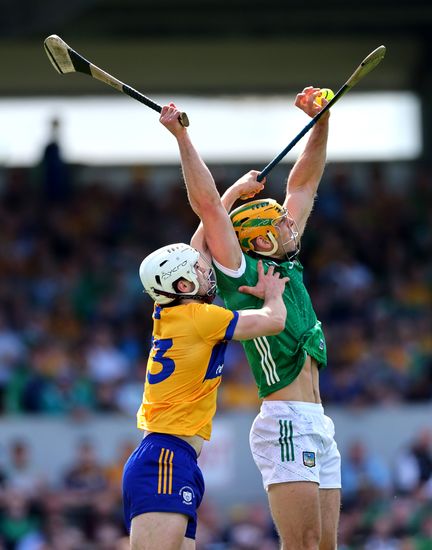Page Turner / Edited by Peter McDermott
“Fenianism’s role in Irish history is controversial and contested. Its penchant for splits, conspiracies, fiascos and funerals is familiar,” says the eminent Irish historian Cormac Ó Gráda. “So is its darker terroristic side, but its considerable popular appeal and enduring resilience should not be overlooked either.
“Eva Ó Cathaoir’s panoramic survey,” he adds, “is the first comprehensive scholarly account of the movement from secretive beginning on St. Patrick’s Day 1858 to enigmatic end in the mid-1920s.”
The Irish Republican Brotherhood was taken over by a new breed of activist in the 1900s and was dissolved by its pro-Treaty majority a couple of decades later. But as that era has been well covered by scholars, involving as it does the 1916 Rising, Eva Ó Cathaoir has concentrated on the half-century up to 1908, which she divides into five periods.

Col. Thomas Kelly, commander of the Fenian Rising of 1867, resident of New York.
She explained to the Irish Echo some of the backdrop to her writing the book: “Having assembled mini biographies of over 1,000 Munster Fenians in Irish and British archives and in the New York Public Library – a gorgeous place, by the way – over decades, it took 10 years to craft a concise, and hopefully stimulating, history of Fenianism.
“Trying to grasp the realities of Irish immigrants, I also visited their last resting places, such as, Calvary Cemetery, New York, where foot soldiers and leaders of the 1860s, like General Michael Corcoran, can be found. I hunted for suspect photos to lend ‘Soldiers of Liberty. A study of Fenianism, 1858 – 1908’ immediacy.”
Ó Cathaoir said: “It was exciting to rediscover their female supporters, e.g. Ellen O’Mahony, a self-confident Irish-American schoolmistress, who ran the women’s wing in the U.S. While never monolithic, the range of military, literary and political talent among the Fenian membership is impressive.”
In the book’s introduction, Ó Cathaoir writes: “This study disagrees with R.V. Crawford’s interpretation of Fenian cadres as convivial associations of young men, asserting their authority like other Europeans, rather than motivated by revolutionary zeal.”
Later she writes: “Flying in the face of contemporary economics, which counselled Irishmen to attract British investment, and seize career opportunities within the empire, the IRB insisted on an alternative vision. Republican leaders as educators of ‘the people’ in line of succession to Tone and Davis. John O’Mahony, Michael Doheny, John O’Leary, Thomas Clarke Luby and their female relatives realized that opposing the British Empire meant a long march towards nationhood. They conceived of Ireland as a spiritual entity and subscribed to a Christ-inspired ethos of devotion and sacrifice, which could culminate in bearing witness on the scaffold.”

Detail of the Celtic Cross, Calvary Cemetery, New York, celebrating the Irish Republican Brotherhood.
Ó Grada says that all that Ó Cathaoir demands is that the reader takes Fenianism seriously, and he says, she “succeeds brilliantly” in showing that most historians have underestimated the movement.
Of her own background, she told the Echo: “I have been fascinated by the complexities of Irish history since secondary school in Germany. I am a native of Hesse, Germany, whose ancestor, Capt. Schimmelpfennig, was defeated by George Washington at the pivotal Battle of Trenton [1776] during the American War of Independence. ‘Washington crossing the Delaware’ in the Metropolitan Museum of Art in New York pictures his episode.”
Exactly 200 years after that battle, Schimmelpfennig’s descendant, a young German scholar, got an Irish government scholarship to study at Trinity College Dublin. Later she taught languages and promoted Irish tourism and heritage.
“I brought up three children, while researching social history [Workhouses and the Great Famine] and the Fenian movement,” said Ó Cathaoir, a resident for the past 40 years, of Bray, Co. Wicklow, where she lives with fellow historian and husband Brendan.
“Our daughter Katharina lectures in law and health care at Copenhagen University, Denmark,” she said. “Sadly, her sister Emer lives in Canada and only our son Patrick, a civil servant, remains in Ireland.”

Eva Ó Cathaoir at the Lilliput Press launch of “Soldiers of Liberty: A study of Fenianism, 1858 – 1908” in Dublin.
Eva Ó Cathaoir
Published works: I started as a writer with the Book of Bray (1989), graduating to contributions in the History and Society county series for Wicklow (1994), Carlow (2008) and Clare (2008) and the Colm Toibin-edited Enniscorthy: a History (2010). My essay ‘German mercenaries in Ireland, 1798 – 1807’, Irish Sword (2001), was supported by an Eoin O’Mahony Bursary from the Royal Irish Academy.
What is your writing routine? Are there ideal conditions?
I use every opportunity to research and write every day, even if it’s only half an hour. When I guide tourists in Ireland, I dip into convenient libraries for rare publications and explore local monuments, whenever the opportunity arises. Writing “Soldiers of Liberty,” could be described as “travels with my laptop.”
What advice do you have for aspiring writers?
Never lose hope - keep going.
Name three books that are memorable in terms of your reading pleasure.
P.D. James, “A Certain Justice” (1997) and “The Murder Room” (2003) and Barbara Vine, “A Fatal Inversion” (1987) – I like a good thriller.
What book are you currently reading?
Michael de Nie and Sean Farrell, “Power and Popular Culture in Modern Ireland. Essays in Honour of James S. Donnelly, Jr.” Full of stimulating essays, for example on the Enniskillen Workhouse during the Great Famine by Desmond McCabe and Cormac Ó Gráda.
If you could meet one author, living or dead, who would it be?
Definitely Oscar Wilde, his plays always make me laugh.
Is there a book you wish you had written?
Peter Quinn, “Banished Children of Eve” (1994), which is set during the Civil War draft riots in New York. His historical detail is amazing.
What is your favorite spot in Ireland?
Clonmacnoise, Co. Offaly. There is a beautiful ancient Irish poem, translated by T.W. Rolleston, a literary Fenian: “In a quiet, water’d land, a land of roses, Stands St. Ciaran’s city fair; And the warriors of Erin in their famous generations slumber there.”
You're Irish if…
To paraphrase John O’Mahony, the Fenian founder, it would be difficult to work out who is of Gaelic descent whose ancestors were “blow ins” – everybody is welcome who contributes.

Col. John O'Mahony, Fenian Head Centre, N.Y.










